How far to plant pears?
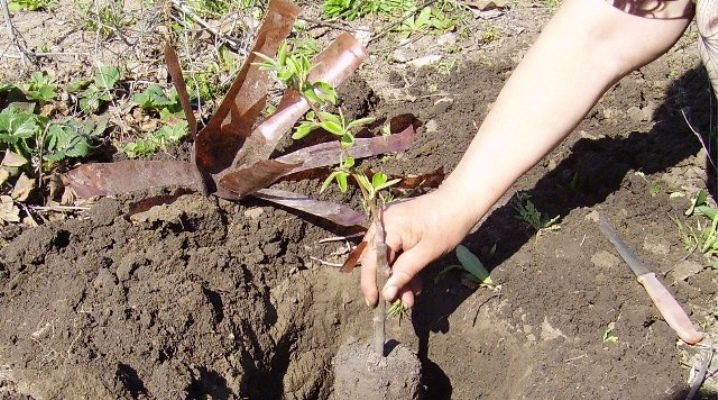
It is not so easy to grow pears in a summer cottage. Already at the planting stage, various questions arise regarding the distance between seedlings. Let's figure out what distance to keep between trees and other objects.
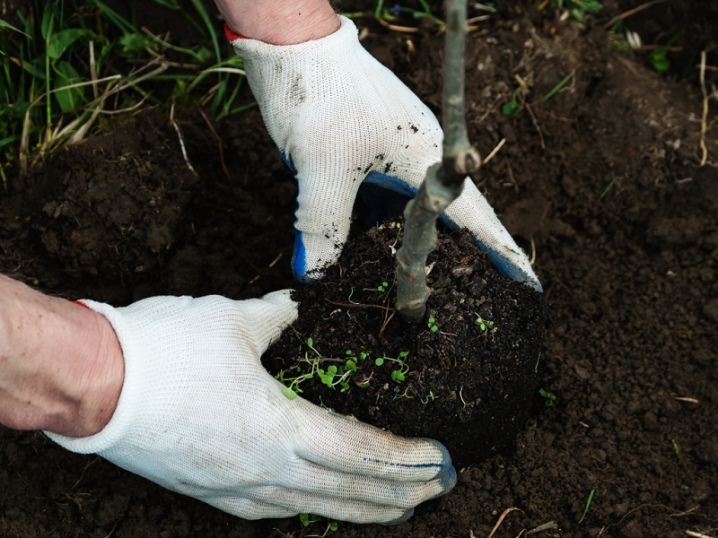
Influencing factors
The pear can be a rather finicky crop. The landing distance depends on several reasons.
- This is a light-loving plant, and if trees are planted at a small distance from each other, then the thickened crown will hide it from the sun, and this will negatively affect its growth.
- Does not tolerate pear and wind, therefore, when planting, take into account the location of other objects on the site, which could hide the plant from the draft.
- Pears can get sick if you plant the wrong neighbors too close. Sometimes the culture even dies when planted next to another plant.
- It's a self-fertile culture therefore, the planting of a pollinator is required for the ovary. In this case, it is also important to take into account the distance between the pear and the pollinator neighbor, otherwise the crop may be very poor or completely absent.
- The choice of the interval between seedlings is also due to varietal characteristics.... Obviously, there will be less space between dwarf species than between tall trees.
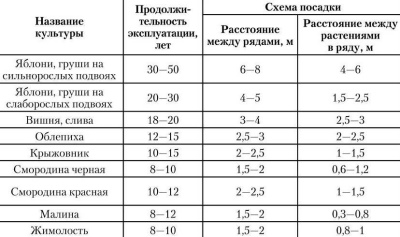
Landing scheme
A pear does not tolerate a transplant, so it is important to immediately drop it in a safe place where it will feel as comfortable as possible. The planting process consists of several stages.
- Prepare a planting hole in the fall if the tree is planted in the spring. For autumn planting, a hole is dug a month before planting. Diameter - 1 m, depth - 60 cm, but consider the size of the root system of a particular variety.
- Place a layer of slate on the bottom. This will prevent roots from growing deeper, close to the groundwater.
- Lay out the soil mixture. The best soil option is loose loam or sandy loam with a slightly acidic or neutral reaction. Form a mound 10-15 cm and drive in the peg from the south side.
- Water the planting site liberally.
- Spread out the roots of the seedling and plant it so that the root collar is 6 cm visible.
- Sprinkle soil over the roots and tie up the shoot.
- Water the planting site, add a layer of mulch.
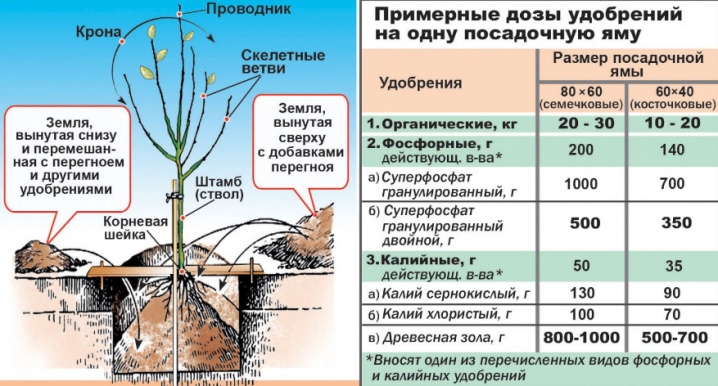
The interval between two copies depends on the variety. Usually the gap is 5 m. If the future crown grows to rounded forms, then the recommended distance is 7 m. When planting dwarf varieties, the distance between plants can be about 3 m. Columnar plants are planted denser, up to 1 m between seedlings.
The distance between specimens is determined, among other things, by the strength of growth. It is customary to plant vigorous varieties according to the 6.5x6.5 m scheme. Miniature species are allowed to plant up to 3000 plants per 1 hectare.
Vigorous trees have 250 specimens per hectare.
As already mentioned, it is a self-fertile crop, and therefore requires pollinating neighbors. It is important to consider here that too close proximity will reduce the comfort of plant development, and too far will reduce the quality of pollination. To avoid difficulties with fruiting, leave a maximum of 10-15 m between the pollinated specimens.
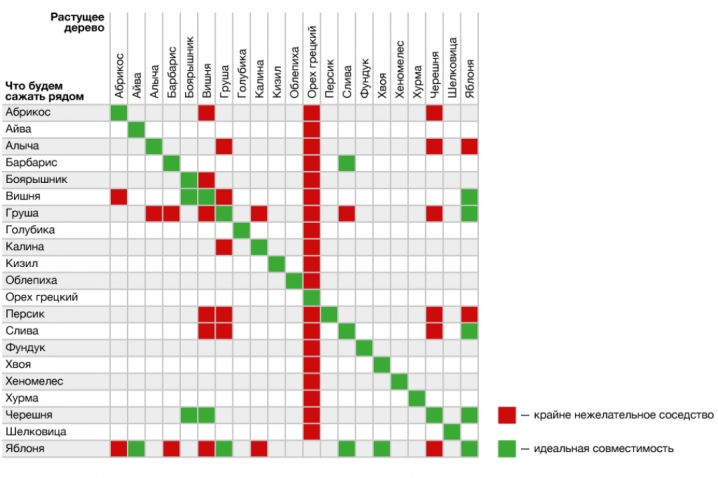
Distance to other crops
The best neighbor for a pear is an apple tree. The culture develops well next to Christmas trees, pines, thujas, rowan trees. The close arrangement of peaches, chestnuts, raspberries, currants, potatoes will end with a bad harvest on both sides.
It is undesirable to place seed varieties with cherries and plums.
Place the seedling 10 m away from tall, spreading or ornamental trees. If these crops are planted from the north, then halve the distance. Peppers and tomatoes are allowed to be planted in the immediate vicinity of the trunks.
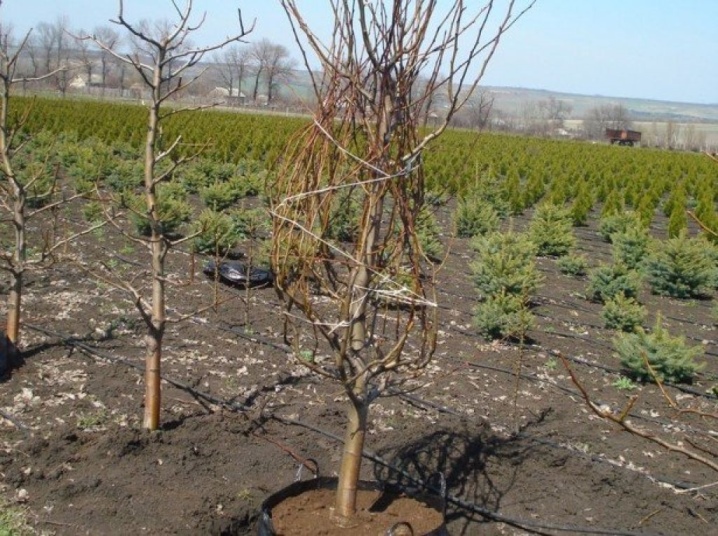
Distance to objects on the site
The shadow from other objects on the site, for example, from a gazebo, fence or country house, can create coolness for a light-loving tree if it is planted nearby. A far-away planting is also undesirable, since in this case the tree, if it grows in the garden alone, will not be blocked by anything from the wind and draft. Therefore, the optimal distance from the pear to other objects should be at least 3 m.
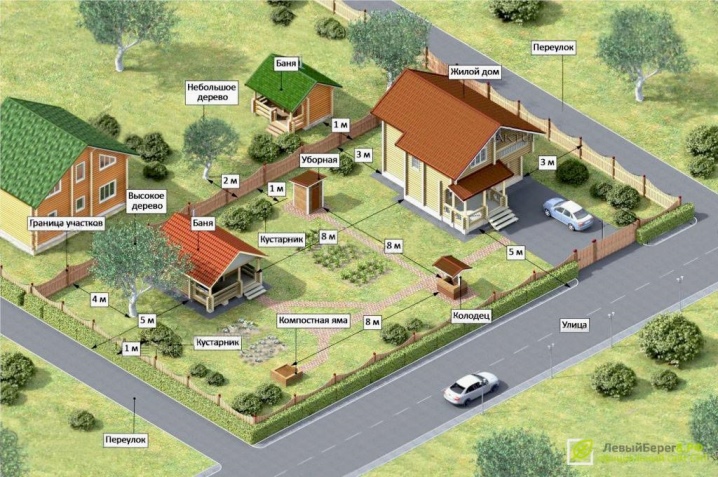









The comment was sent successfully.